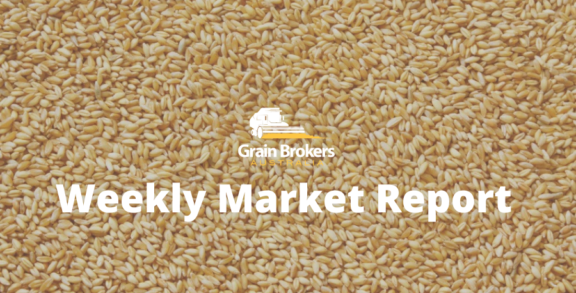
The worsening drought in parts of South America, particularly Brazil, has resulted in record-low water levels in a number of the region’s major waterways, such as the Paraguay and Paraná Rivers. This significant environmental issue is causing widespread disruptions to river navigation, crucial for the transportation of agricultural produce, with the impact affecting not only local industries but also the travel and tourism sectors.
The Paraguay River set a new record low on Monday of last week, with the water level dropping to 89 centimetres below the “zero” benchmark on the meter at the main port in Asuncion, Paraguay’s capital. The National Meteorology and Hydrology Directorate confirmed that it was the lowest level recorded at the port in 120 years, breaking the previous record seasonal low, which occurred almost three years ago, in October 2021.
Originating in Brazil, the Paraguay-Paraná waterway system runs 3,400 kilometres through Argentina, Bolivia, Brazil, Paraguay and Uruguay and into the Atlantic Ocean via the Rio de la Plata estuary. The system rises in the Brazilian highlands of Mato Grosso, Goiás and Minas Gerais and flows southward in two sections – the Paraguay and Paraná. The two rivers unite in the south of Brazil on the Argentina-Paraguay border to form the Paraná River proper.
Although landlocked, Paraguay’s location at the confluence of the Paraguay and Parana Rivers positions it quite strategically along several of the continent’s principal trade routes. Paraguay is one of the world’s leading exporters of agricultural commodities and relies on the system to move around 80 per cent of its international trade. This includes grain exports such as corn and soybeans, the latter of which it is the world’s third biggest exporter.
The reduced water levels are hampering the navigation of river barges and small ships, causing significant delays and logistics challenges for commercial trade. This disruption in the marine transport sector, vital for the local economy, could impact global supply chains and international trade. The Paraguayan Oilseed and Grain Crushing Chamber reported the disruption was affecting grain export logistics, although the full impact has been somewhat mitigated as this season’s peak export period has now passed. According to Paraguay’s fishing union, the low river flows have also left 1,600 fishermen unemployed, with boats left stranded on dry riverbanks.
With no immediate relief in sight and long-range weather forecasts suggesting minimal run-off rainfall over the next few months, industry officials anticipate significant financial losses that could run into the hundreds of millions of dollars due to slower or lost trade, higher freight rates and elevated import costs. Lower than average precipitation is expected in the last quarter of the year due to the developing La Nina weather phenomenon, which normally brings drier and cooler conditions in Paraguay and Argentina, although it usually signals wetter weather in the north of Brazil.
The drying of the Paraguay River underscores the broader global trend of more frequent and intense drought cycles, exacerbated by factors such as widespread deforestation for agricultural production and poor water management and governance practices.
According to Paraguay’s main shipping association, river traffic disruptions have spread across neighbouring countries in the past ten days, with over half the waterway’s shipping capacity halted or delayed. Limited cargo can be loaded on barges and ships to avoid the risk of grounding in shallow sections of the river. This has been costly for Brazil, which exports iron ore along the river, and Bolivia, which is now forced to reroute incoming fuel shipments overland. Paraguay also relies on the river for a significant proportion of its electricity supplies, with the probability of supply cuts increasing with every rainless day.
Brazil is currently enduring its worst drought since nationwide measurements began over seven decades ago. Almost 60 per cent of the country is under moderate, extreme or severe moisture stress, an area of roughly five million square kilometres, or twice the size of Western Australia. It is reportedly the most intense and widespread drought in Brazil’s history, and for the first time ever, stretches from the northernmost reaches to the country’s far southeast. Wildfires are raging in the Amazon basin and the forests along Paraguay’s northern border. The Madeira River, one of the Amazon River’s main tributaries, also registered a new record low last week at the northwestern city of Tabatinga, which lies on the triple border with Peru and Columbia.
Meanwhile, on the lower Paraná River around Rosario in Argentina, the low water flows are also creating havoc for loaded vessels departing the huge agricultural export hub. Sailing along the Paraná Waterway was halted for 12 hours on Saturday week ago between San Nicolás and Ramallo when the Croatian-flagged bulk carrier AP Revelin ran aground, hindering traffic in both directions. When its trip was cut short, the 180-meter-long vessel was sailing downriver with 32,000 metric tonne of soybeans bound for Turkey.
A navigation disaster was averted, with the stranded vessel eventually refloated just 12 hours later with tugboat assistance. However, the AP Revelin had sailed from its loadport with a draft of 9.54 metres, well above the 8.88 metre maximum set by the Argentinian Coast Guard due to the shallower shipping lane. At least half a dozen other vessels loaded with agricultural produce scheduled for departure early last week had sailing drafts exceeding 10 metres, rendering them powerless to navigate the waters to the Rio de la Plata until river flows improve.
Adding to the current navigation woes is a delay in the dredging activities along the Parana River downstream of Rosario. This essential to ensure efficient and uninterrupted, year-round flow of import and export traffic, especially when the water levels in the system are low. The company doing the work claims the Argentinian government owes them millions of dollars for work already completed.
Call your local Grain Brokers Australia representative on 1300 946 544 to discuss your grain marketing needs.
Written by Peter McMeekin.





